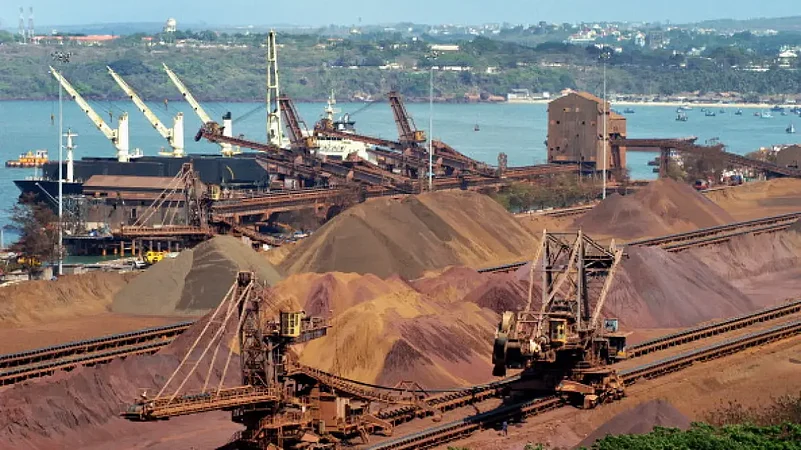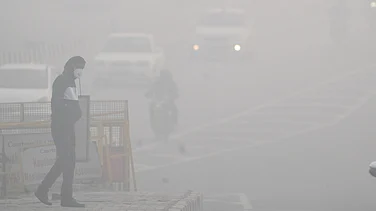The most stunning declaration of what the idea of Goa stands for came from an unusual source: the Bombay High Court, sitting at Panaji, through a judgment of the learned Justice Gautam Patel on the 11th of October 2017.
Faced with the extent of environmental litigation in Goa, Justice Patel wrote in eloquent language oft quoted: “This is an extraordinary state. In more ways than one, a place where, perhaps more than anywhere else, sky, sea and earth meet. From horizon to horizon, it is a land of abundant richness. It is a land of confluences, where diverse strands meet and co-exist; and, in a time of apparently incessant strife and discord, it is still a mostly liberal land. It is a kind and gentle land, of a kind and gentle people. And it is also a land that, given its small size and small population, has had a wholly disproportionate influence on our art, culture, language, music, literature, architecture, history, design and more (even food, for many of what we consider our staples first came from here). Its greatest asset is one: its environment and its ecology – its rivers and riverbanks, its beaches, its lakes and clear streams, its dense forests, its low hills and fertile fields, its boulders and even trees shrouded with moss and vines and lichen in the rains, its ridiculously brilliant sunsets. One needs only to turn off an arterial road to either east or west to see all this first-hand, and all of it within but a few minutes… This is something none can deny: this is a land truly worth fighting for.”
Every year, the stunning green wonder of this smallest of India’s states comprising a population of 15 lakh attracts more than 75-80 lakh tourists who come mostly to gawk. However, Goa did not come into existence just like that. It is nothing less than a great work of art, created over centuries by an amazing community of ordinary individuals who not only understood their environment, but worked within the limits it imposed, to generate an economy with in-built intergenerational equity concerns.

When I was very young, just about ten years old, schooling in Mumbai, one evening I was carrying a tiffin for an uncle working at the VT station. A stranger accosted me, claimed to know me, then enticed me into a dark corner behind a building staircase on some pretext, where he unzipped his trouser and thrust his penis into my small hands. I mumbled in protest, somehow disentangled myself from him and ran.
Every time I think of what is being done to Goa right now, where lewd and inappropriate proposals are being thrust unsolicited onto an unwilling population with its long safeguarded natural assets, I can only think back to that childhood molestation. Only in the case of Goa, she has no chance of running away. She is being forced to submit, because the state feels that rape is in her best interest. The Mona Lisa at The Louvre is covered in protective glass to prevent attacks from psychos. In Goa, real estate developers, miners and a whole gaggle of bulls are instead granted permits to gash, gouge, excavate, destroy and debrify chunks of nature that millions of people come here to see, enjoy and celebrate.
For the past nearly 50 years since I married and made Goa my home, protests after protests have erupted against the rank takeover of the natural resources of this tiny state. For example, Goa is the only state that got rid of 18 SEZs in a single day – due to popular protests. Or had its statutory Regional Plan (for land use) de-notified due to a massive agitation. Presently, public protests against 3 infrastructure proposals through the Mollem National Park, have caught the eye of the Supreme Court of India no less. Goan village communities have swamped the public hearings for preparation of coastal zone maps and forced the authorities to consider their inputs. People have fought the wholly unnecessary second airport at Mopa and have refused to hand over ancestral lands for an IIT. Pollution battles against Zuari Agro Chemicals, Du Pont and Vedanta are known the world over. People are still battling the nationalization of Goa’s rivers and double tracking of the South West railway to carry coal through their heritage villages. It is simply amazing that people in Goa are willing to put aside their personal lives and make time to fight for conserving the ecological integrity of the state.
Nothing illustrates officially patronized assault on Goa better than its encounter with the mining. The first mining lease for the extraction of iron ore (by manual means) was handed out by the erstwhile Portuguese colonial regime in 1929. Thereafter, in the dying years of their regime, the Portuguese handed out a total of 791 manifests called concessions” – each from 20 to 100 hectares to anyone who showed proof that he had discovered some mineral. The concessions were given “in perpetuity.”
Already by the mid-1970s, the National Institute of Oceanography (NIO) was reporting a total of 60,000 tonnes of mining sediment entering Goa’s rivers from unregulated mining activity, drowning out the life of clams and oysters as the silt formed a blanket across the estuaries. No one listened. The NIO discontinued its study. People living along the rivers complained that the barges carrying ore to the ships destroyed the riverine embankments, destabilizing the low lying khazan lands, another unique agricultural system proposed for living heritage status with the UN. No one listened. The mining activity dried up wells and streams and destroyed hundreds of hectares of paddy fields, rendering the settled village populations surrounding the mines without water and livelihood. Farmers protested. No one listened. Government of India readily granted permission for mass felling of more forests for enhancing ore extraction. And all this activity was to produce minerals for the industrial development of China!

From 2004-2012, extraction rose from 12-15 million tons of iron ore to 45 million tonnes, with politicians and miners as a zero-liability partnership, enjoying windfall gains, while bureaucrats obeyed orders from the Chief Minister to look the other way. The Goan countryside today is filled with huge dumps of mining waste totally 850 million tonnes.
Between those 8 years, Goa’s mining turnover touched Rs.88,000 crore. Of this, if expenses relating to extraction including a reasonable profit were debited, total leftover was Rs.54,000 crore. Of that, miners walked away with an additional Rs.32,000 crore. State of Goa – trustee of the minerals on behalf of the people of the state – got a measly Rs.2,387 crore (less than 5% of the Rs.54,000 crore) as “royalty”.
As is well known, all that loot, plunder and destruction came to a halt and has remained halted because the Supreme Court waylaid all approvals, permits and environment clearances granted in such a legal sizzle that the phoenix has been unable to rise even today from the mining dust long settled. The Court declared that mining from 2007 to 2012 (when it was suspended) was illegal as it was carried out without valid leases. It confiscated all ores extracted (16.80 million tonnes worth Rs.2,000 crore) and handed it to the state. The rehabilitation of mined out areas remains an unfinished agenda – neither the focus of government nor the worry of the miners.
Moved by the gross ravages done by mining to Goa’s fragile environment, the Supreme Court attempted to ensure that such excesses would never recur. It imposed a “cap” on the production of ore, so that the environment could breathe, and the next generation would also have ore to extract and use for its needs. It also inaugurated the country’s first Permanent Fund, directing that the Goa Iron Ore Permanent Fund (which we call the Goenchi Mati Permanent Fund), would henceforth be credited with 10% of the invoice value of all sales of iron ore in the state. The Fund today has already collected more than Rs.500 crores, reserved for future generations. The idea is once the ore is exhausted, its value will continue to be available in the form of the Fund for generations to come. The recommendation of the Expert Committee – that such funds be created in all states where natural resources are being sold for exploitation – is yet to be considered by the apex court.
The GF has suggested that the monies deposited in the Permanent Fund should not only be wisely invested (through agencies like the National Pension Fund), but should be used to make the Fund inflation-compliant, while the rest of the earnings or interest be distributed annually as a basic income or citizen’s dividend to all citizens of the state. If that logic is accepted, all citizens who are deemed owners would benefit from using the natural resources of the state, and just a few families who have hitherto exploited these minerals for their own personal gains. This would be in keeping with the country’s National Mineral Policy 2019 declares: “Natural resources, including minerals, are a shared inheritance where the state is the trustee on behalf of the people to ensure that future generations receive the benefit of inheritance.”
The Goa Foundation case lays the ground for a major overhaul in favour of citizen ownership and benefit over common resources including ores, beaches, forests, water bodies, rivers and fishery resources. The older frameworks are colonial, unjust, and do not meet the ends of Article 39 of the Constitution of India. Goa’s newest inheritance, the Permanent Fund, will become a feature of every state and relate to every natural resource only if citizens everywhere begin to make similar demands. Goa has shown the way. Only that the lesson was very expensive, as the lesions everywhere show.





















